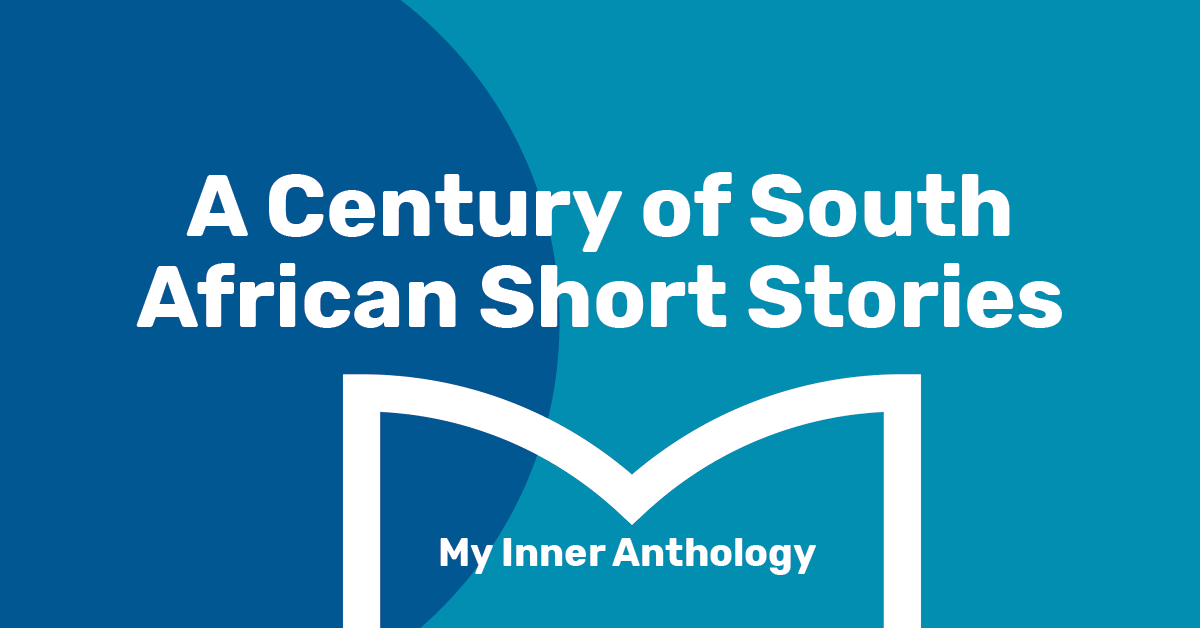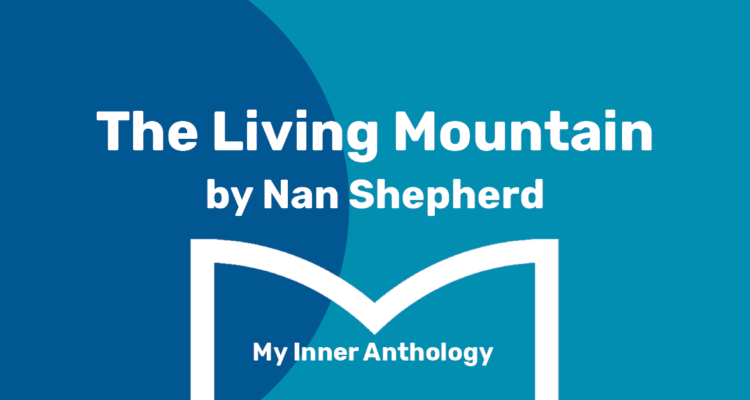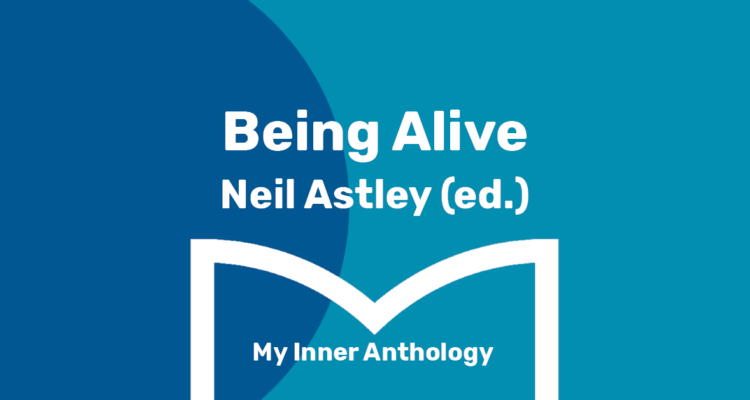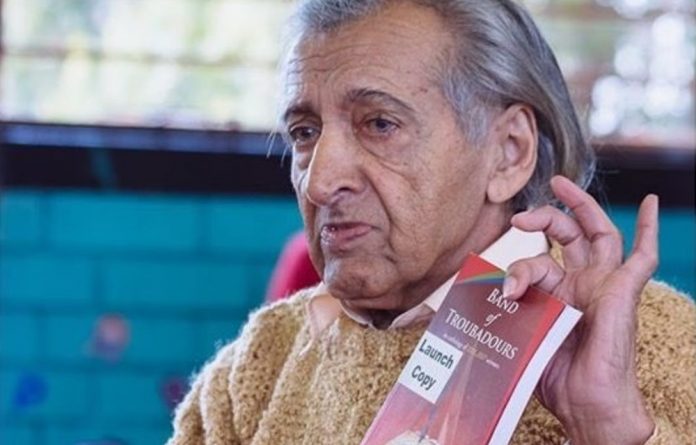My Inner Anthology: A Century of South African Short Stories
The Inner Anthology is an invisible book that varies from editor to editor. It takes a lifetime to compile, it will never be finished or published, it uses no paper, cardboard bindings, string, glue or ink and it vanishes altogether at the moment of your death, but I still believe it is one of the most important books we take up.
Mark Crees, The Inner Anthology, The Reader Issue 14, Spring 2004
In Mark Crees essay, The Inner Anthology, the author discusses the benefits of committing poems to memory – not in that old school way of learning a poem by rote, but rather a more fluid and organic type of recall, like the way we can recall favourite lines from our favourite songs. Once we can do that, we can have our own portable library – words and feelings which we can recall at times of need, or comfort, or pleasure, where ever we are in the world.
We thought it would be good to take this idea and think about which bits of literature – whether that be in the form of poems, novels, essays, or plays – would we like to carry around inside ourselves for future reference. There is so much out there that at times it can be difficult to see the woods through the trees. Our time is precious, the space of our inner world valuable. We don’t want to fill it up with clutter, but with only the best hand-picked bespoke treasures that we can find. This week The Reader's Publications Manager, Grace Frame, recommends A Century of South African Short Stories.

It is good to be a handed a book that you might not have picked out for yourself. I confess that this is what happened for me with a collection of short stories (first published 1978, revised 1993). This collection, A Century of South African Short Stories, gave me something to work away at, with its chronological span from the late nineteenth century to the close of the twentieth century. Certainly these stories wouldn’t have to be read in order, and perhaps many would dip in and out of a book such as this, but there is something to be said I think for following the shifts that are documented through this arrangement of the stories, which give us as Martin Trump suggests in his introduction a ‘personalised history’ of a country about which I only really know some brief headlines.
The biggest takeaway for me in the reading of this book was the sheer variety of perspectives and people to whom I felt I was being introduced through its pages. The editor notes that of the forty-two stories to be included, sixteen are by black writers, though this proportion increases with time. But there are also stories for example about South Africans of Indian descent. ‘The Finishing Touch’ is situated in the Tamil community, where we meet a man who tries to change his name to that of a white man in order to be taken seriously in his efforts to run a business. It is a story about fighting the system, and the inevitable question of whether it is worth it. In ‘Annual Migration’, by contrast, we take a trip with Esther, a Jewish grandmother, on her annual visit to her son and daughter in the States. For all these visits, though, this is also a story about a family which has grown apart, and of a woman who has been left behind.
There are four stories that particularly stood out to me, which I would like to recommend.
‘A Chip of Glass Ruby’ was later made into a film (1982), and is written by the Nobel-prize winning Nadine Gordimer. It is about Mrs Bamjee, an enterprising and independently-minded woman who has a household of nine children to oversee, but who also takes it upon herself actively to join the local campaign against apartheid, despite the fact that as an Indian Moslem this is not a cause by which she is directly affected. I love the warmth with which the Bamjee family is depicted: Mrs Bamjee’s husband is hapless and bewildered by the personal cost that his wife chooses to take on, but he too is hardworking in his way and is left trying to make sense of his own lonely situation when his wife is carted off to prison. The children, on the other hand, do largely understand what is happening throughout, and at the beginning of the story we catch a glimpse of how that has come to be and of what it is like to live in this large family, heaving with life:
in the small house that held them all there was no room for privacy for the discussion of matters they were too young to hear, and so they had never been too young to hear anything.
‘The Hajji’ by Ahmed Essop is a story that could simply be shocking, and yet to me it takes us to the heart of how family members who have been separated by a rift can become so intransigent, even when this seems to make little sense. It is ten years since Hassen’s brother Karim had cut himself off from his family and Muslim community in order to take up with a white woman. Karim is now on his deathbed and wants to return home, to be buried in accordance with his heritage and the religious customs with which he is familiar. But whilst Hassen is prepared to relent, the real issue that in the end prevents him from acting on this impulse is his fear for his own dignity. Throughout the story, others around him try to take the moral high ground and to convince him to join them, but their arguments are powerless because they fail to address this deep-seated feeling. It becomes for Hassen a choice between ‘giving in’ and standing firm:
By giving in he would be displaying mental dithering of the worst kind, a man without an inner fibre, decision and firmness of will.
Perseus Adams is probably the least well known of the writers I have mentioned, but his story ‘A True Gruesome’ has to be my favourite. Dawn, thirteen, and Eric, her history teacher, thirty-two, shouldn’t on the face of things have too much to do with one another. But the story allows them to connect in such a way that they are able to share an experience – a simple walk up and down a hill – that brings to light their spiritual kinship. Both are loners and have suffered individually at times in the way that they are viewed by other people. But there is a lovely moment when they reach the spot that Dawn had wanted to show Eric:
… the woodland silences, punctuated agreeably only by chirruping insects and the call of a shrike or sombre bulbul, moved even further within them both, till the wounds of the past became less harsh …
My last story, ‘Journal of a Wall’ by Ivan Vladislavic, is about a man who in his aloneness seems more concerning. He spends the pages of the story narrating the progress of his neighbour across the road, a man whom he does not know, who has embarked upon the project of building a wall at the end of his lawn. The man telling the story becomes consumed with his own project of observing what is happening, and seems to have invested the project with his own hopes and aspirations. But while there is a sense throughout, that this story is not really about the wall, it is difficult to put your finger on exactly what the point is. Perhaps there is an element of wanting something to believe in, and also wanting a reason to be able to connect with one’s fellow citizens. The televised unrest in the townships is a recurring theme as the time for the news bulletin rolls around each day.
If only he would invite me in to watch the news with them: that would give us many opportunities to discuss the state of the country, the newest trouble spots, local and abroad, and get to know one another.
There are times when it seems as if the bad news, the state of not just the country but the world, is the only thing we share in common. It is, I think, an illusion, and yet we are compelled - are we not? - by our very nature to find a starting point.
Share
Related Articles

My Inner Anthology: As You Like It by William Shakespeare
Reader Leader, Lizzie, recommends As You Like It by William Shakespeare. In May the theme for our Daily Readings is inspired by The…

My Inner Anthology: The Living Mountain by Nan Shepherd
Teaching and Learning Coordinator, Lisa Spurgin, recommends The Living Mountain by Nan Shepherd. In May the theme for our Daily Readings is…

My Inner Anthology: Being Alive – Neil Astley (ed.)
Reader Leader Lizzie, recommends and reads from 'Being Alive' - Neil Astley (ed.). In May the theme for our Daily…



